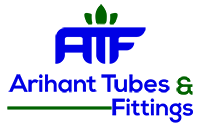He has been the CFO or controller of both small and medium sized companies and has run small businesses of his own. He has been a manager and an auditor with Deloitte, a big 4 accountancy firm, and holds a degree from Loughborough University. As an example of how to calculate high low method, suppose a business had the following information relating to its costs. The high-low method only requires the high and low points of the data and can be worked through with a calculator. It’s also possible to draw incorrect conclusions by assuming that just because two sets of data correlate with each other, one must cause changes in the other.
In most real-world cases, it should be possible to obtain more information so the variable and fixed costs can be determined directly. Thus, the high-low method should only be used when clearing account it is not possible to obtain actual billing data. From all the above examples, we get a lot of clarity regarding the concept and how to calculate the same from data that we get in the financial statements.
Step 5: Calculate the Total Cost
It ignores the other points of productions, so it may be an error when the cost does not increase in a linear graph. The two points are not representing the production cost at a normal level. The variable cost per unit is equal to the slope of the cost volume line (i.e. change in total cost ÷ change in number of units produced). The high-low method is relatively unreliable because it only takes two extreme activity levels into consideration.
How Does the High-Low Method Compare to Regression Analysis?
Continuing with this example, if the total electricity cost was $18,000 when there were 120,000 MHs, the variable portion is assumed to have been $12,000 (120,000 MHs times $0.10). Since the total electricity cost was $18,000 and the variable cost was calculated to be $12,000, the fixed cost of electricity for the month must have been the $6,000. If we use the lowest level of activity, the total cost of $16,000 would include $10,000 of variable cost (100,000 MHs times $0.10) with the remainder of $6,000 being the fixed cost for the month. If the variable cost is a fixed charge per unit and fixed costs remain the same, it is possible to determine the fixed and variable costs by solving the system of equations.
Once the variable cost figure is known, it’s only necessary to multiply it by the projected production figure and add fixed costs. The high-low method is generally not so popular because it can lead to a wrong interpretation of the data if there are changes in variable or fixed cost rates over time. Although easy to understand, high low method may be unreliable because it ignores all the data except for the two extremes. It can be argued that activity-cost pairs (i.e. activity level and the corresponding total cost) which are not representative of the set of data should be excluded before using high-low method. Fixed costs can be found be deducting the total variable cost for a given activity level (i.e. 6000 or 4000) from the total cost of that activity level.
- The high-low method is useful for both businesses and investors who are seeking a quick estimate of cost behavior without delving into more detailed financial data.
- Simply multiplying the variable cost per unit (Step 2) by the number of units expected to be produced in April gives us the total variable cost for that month.
- The high-low method is used in cost accounting to estimate fixed and variable costs based on a business’s highest and lowest levels of activity.
- Because it relies on two extreme values from only one data set, it can distort costs.
- The one element of the total cost then provides the second element by deducting it from the total costs.
The Cost Function
It is possible to also work out the fixed and variable costs by solving the equations. But this is only if the variable cost is a fixed charge per unit of product and the fixed costs remain the same. The high-low method is a useful tool for estimating fixed and variable costs, helping businesses predict how expenses change with activity levels. While it’s not without limitations, it provides a quick and accessible way to analyze cost behavior. For investors and business owners, the high-low method can support better cost control, financial planning and investment decisions.
Why Is the High-Low Method a Simple Analysis?
Highest activity level is 21,000 hours in Q4.Lowest activity level is 15,000 hours in Q1. This can be used to calculate the total cost of various units for the bakery. Additionally, the high-low method assumes a linear relationship between costs and activity, which may not hold in all business scenarios. For companies with fluctuating or irregular costs, alternative cost estimation methods may offer a more accurate picture of expenses.
Construct total cost equation based on high-low calculations above
The high-low method is not very reliable because it only considers two extreme levels of activity. And it may not accurately represent the typical costs incurred at those levels due to abnormal costs that are either higher or lower than usual. When analyzing costs as to behavior, costs are classified into fixed and variable costs. Before costs can be effectively used in analysis, they should be segregated into purely fixed and purely variable costs.
The fixed cost can be calculated once the variable cost per unit is determined. The high low method has allowed a total cost to be split into variable and fixed cost components. In the example above the variable cost per unit is 5.00 and fixed costs are 40,000.
The cost accounting technique of the high-low method is used to split the variable and fixed costs. The mathematical expression for the high-low method takes the highest and lowest activity levels from an accounting period. The activity levels are then apportioned against the highest and lowest number of units produced.
High-Low Method vs Regression Analysis
- 23,000 hours are expected to be worked in the first quarter of the next year.
- High Low method will give us the estimation of fixed cost and variable cost, the result may be changed when the total unit and cost of both point change.
- The high low method is an accounting technique used to estimate the fixed and variable cost of production in businesses.
- The high-low method only requires the high and low points of the data and can be worked through with a calculator.
- For investors and business owners, the high-low method can support better cost control, financial planning and investment decisions.
The high-low method can free electronic filing also be done mathematically for accurate computation. Calculate the expected factory overhead cost in April using the High-Low method. Below is a break down of subject weightings in the FMVA® financial analyst program. As you can see there is a heavy focus on financial modeling, finance, Excel, business valuation, budgeting/forecasting, PowerPoint presentations, accounting and business strategy. A company needs to know the expected amount of factory overheads cost it will incur in the following month. It is a very simple and easy way to divide the costs of the entity in a methodical manner, even if the information available is very less.
The Western Company presents the production and cost data for the first six months of the 2015. To make the procedure simple and easy to understand, we can divide the calculations into the following three steps. Suppose a company Green Star provides the following production scenario for the 06 months of the production period. Due to its unreliability, high low method employment law 101 should be carefully used, usually in cases where the data is simple and not too scattered. For complex scenarios, alternate methods should be considered such as scatter-graph method and least-squares regression method.
For investors, it provides insight into a company’s cost structure, helping them assess efficiency and growth potential. By applying the high-low method, readers can gain a clearer understanding of cost behavior and use it to plan or evaluate opportunities. It shouldn’t matter whether you use the high or low points, as the relative difference between each metric is matched within itself. Nevertheless, it has limitations, such as the high-low method assumes a linear relationship between cost and activity, which may be an oversimplification of cost behavior.
You need to know what the expected amount of overheads that your production line will incur in the next month. The fixed cost is the same whether the high or the low units are used. In this example the highest activity is 2,700 units and the lowest activity is 500 units. The high-low method is a straightforward technique that requires minimal calculations. It involves using the highest and lowest data points and can be easily done with a basic calculator.
However, in many cases, the increased production levels need additional fixed costs such as the additional purchase of machinery or other assets. The higher production volumes also reduce the variable proportion of costs too. The high-low method can be used to identify these patterns and can split the portions of variable and fixed costs.


Recent Comments